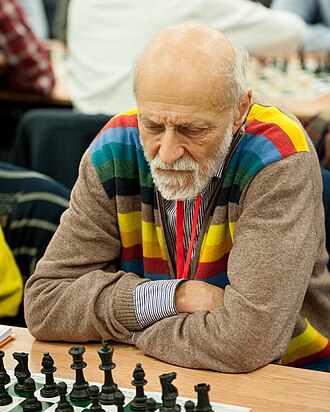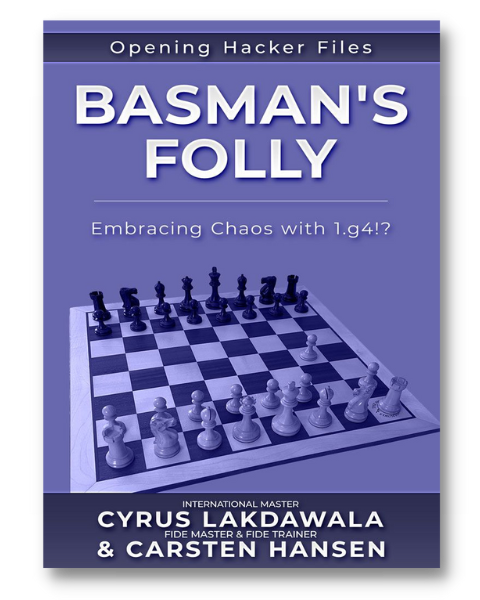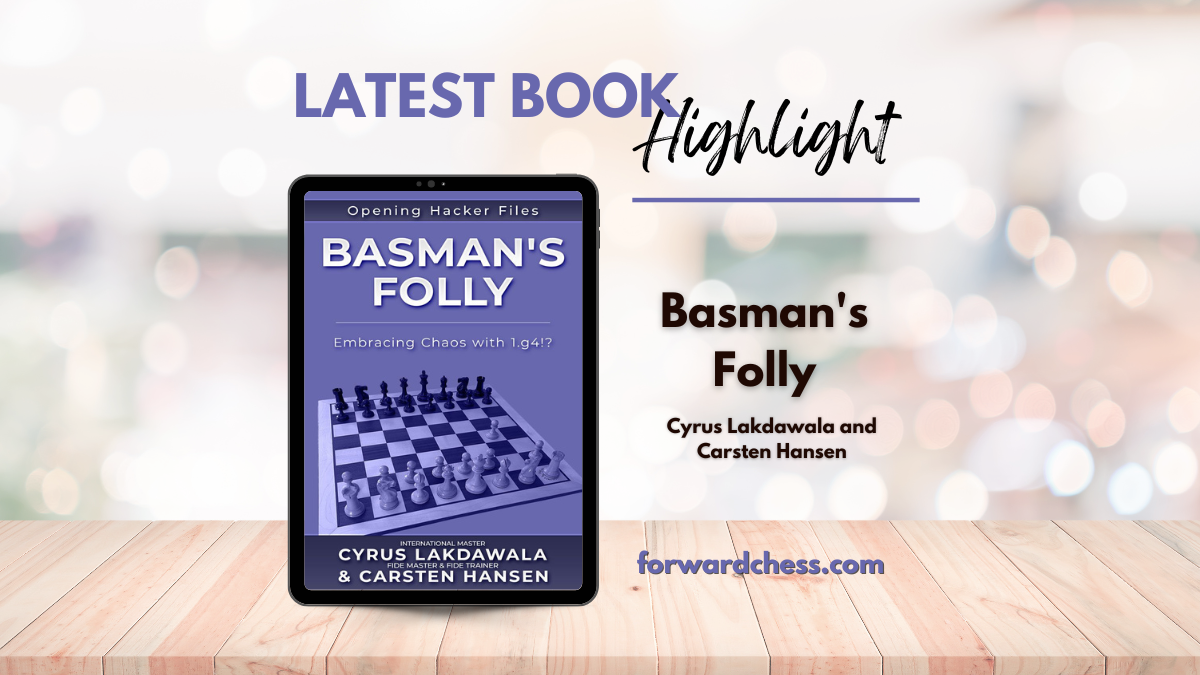We all like to play something a little different from time to time. Basman’s Folly: Embracing Chaos with 1.g4!?, by the prolific duo of Cyrus Lakdawala & Carsten Hansen, will certainly tempt chess players of all strengths to dabble in the dark side of one of the most eccentric of all opening moves – The Grob.
Michael Basman, of course, always went his own way, both in real life and in chess. His Audio Chess tapes (yes, chess tuition existed before the Internet and even before CDs and DVDs) led to a brief burst of popularity for Grob’s Opening in the 1980s and he even played the opening with the black pieces (sometimes known as ‘The Borg’).

Assuming one is not going to go the whole hog with 1.g4 and 2.f3 (or 1…g5 and 2…f6, as occasionally seen in online protest games) then the Grob player must provide some justification for the early advance of the g-pawn.
Modern chess is full of early lunges by the g-pawn (Garry Kasparov was fond of the energy created in the middlegames of the Queen’s Gambit, for example) but pushing it on move one requires a degree of commitment few players will happily embrace.
Of course, anyone who perseveres with an opening will learn a few traps along the way and they will be ready to spring them over the board, especially in Blitz and Rapidplay games.
Here is a case in point.
1.g4 d5 2.Bg2 Bxg4 3.c4 c6 4.cxd5 cxd5 5.Qb3 e6?? 6.Qa4+ and 7.Qxg4…
…picking up a piece in broad daylight, even though Black played what appeared to be five very logical moves.
In this new book, the authors give plenty of examples showing the Grob in all its glory. The presentation is sunny side up, so a little caution and some extra work will be needed to avoid ending up on the wrong side of a messy debacle.
However, the material will appeal to maverick chess players of all strengths who are tired of learning opening theory and want something with a lighter theoretical touch and, in keeping with that particular ethos, we present two typical Grob moments – one with each color.
Mark Hebden – Michael Basman
Borehamwood, 1981
How to deal with the threat to the g-pawn? Well, Basman comes up with a novel idea, starting with 4…d6!?
Now, after 5.fxg5 hxg5 6.Bxg5 c5 7.d5 Qb6 8.Bd2 Nd7, Black gained compensation for the pawn, in the form of a strong grip of the important e5-square and dark-square control. After many more unlikely adventures, Basman went on to win (0-1, 35).
Michael Basman – James Howell
Leighton (Rapid), 1989
It seems a shade unfair that Basman could usually get away with moving his h- and g-pawns, but his opponents could not afford such luxuries.
Here, Black has just played the sensible-looking 24…h6, to give White’s queen a question to answer. Unfortunately, Basman showed that even he sometimes resorted to central occupation with the powerful 25. Qe5!, when the threats of 26. Qxb8+ and 26. Nxf6+ followed by 27. Qxe2. This was more than Black could deal with, so he resigned.
It seems unlikely one can become a World Champion by playing The Grob on a regular basis. Yet it can be fun to play in fast games and friendlies, so if anyone out there would like to give it a try then there is no better place to start than with a collection of Basman’s games.

Sean Marsh
- The Life and Games of Dragoljub Velimirovic (Volume 2) by Georg Mohr and Ana Velimirovic-Zorica - July 23, 2024
- Review: Chess Informant - June 7, 2024
- Is it time for a Modern Benoni revival - April 17, 2024
